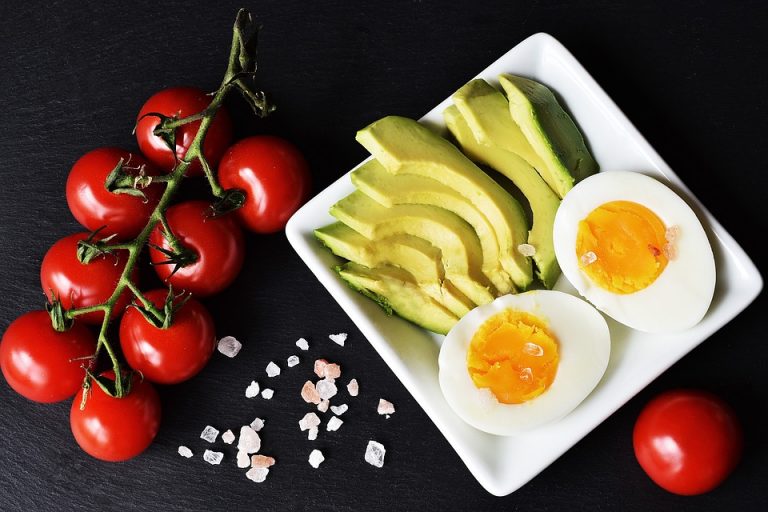
A ketogenic diet consists of replacing carbohydrates with fats. It is a very low-carb, high-fat diet that shares many similarities with the Atkins diet. The reduction in carbs puts the body into a metabolic state called ketosis.
Ketosis helps the body become incredibly efficient at burning fat for energy, by burning fats into ketones in the liver, which can supply for the brain. It is known to have caused massive reductions in blood sugar and insulin levels.
Different ketogenic diets:
According to healthline.com, these include:
- Standard ketogenic diet (SKD): This is a very low-carb, moderate-protein and high-fat diet. It typically contains 75 percent fat, 20 percent protein and only 5 percent carbs.
- Cyclical ketogenic diet (CKD): This diet involves periods of higher-carb refeeds, such as 5 ketogenic days followed by 2 high-carb days.
- Targeted ketogenic diet (TKD): This diet allows you to add carbs around workouts.
- High-protein ketogenic diet: This is similar to a standard ketogenic diet, but includes more protein. The ratio is often 60 percent fat, 35 percent protein and 5 percent carbs.
While standard and the high-protein ketogenic diet have been studied extensively, the cyclical or target ketogenic diet are more advanced and are used mostly by bodybuilders or athletes. The information provided applies to the standard ketogenic diet.
Losing weight:
The ketogenic diet has been effective in lower body weight and lower risk for diabetes. According to healthline.com, the diet is filling enough that you can lose weight without counting calories or tracking the food intake.
As per one study, people on a ketogenic diet lost 2.2 times more weight than those on a calorie-restricted low-fat diet, while another study found that people on the ketogenic diet lost 3 times more weight than those on the diet recommended by Diabetes UK.
Diabetes is characterised by changes in metabolism, high blood sugar and impaired insulin function. Ketogenic diet is superior to a low-fat-diet that helps increased protein intake, lower blood sugar levels and improved insulin sensitivity in type 2 diabetes, prediabetes and metabolic syndrome.
Studies found out that ketogenic diet improved insulin sensitivity by 75 percent and another study showed 7 out of the 21 participants with type 2 diabetes were able to stop using all diabetes medications.
While another study showed that 95.2 percent of the ketogenic group were also able to stop or reduce diabetes medication, compared to 62 percent in the higher-carb group.
Other health benefits:
A ketogenic diet has allegedly been able to help in the following diseases and conditions:
- Heart disease
- Cancer
- Alzheimer’s disease
- Epilepsy
- Parkinson’s disease
- Polycystic ovary syndrome
- Brain injuries
- Acne
Foods to eat:
- Meat: Red meat, steak, ham, sausage, bacon, chicken and turkey.
- Fatty fish: Such as salmon, trout, tuna and mackerel.
- Eggs: Look for pastured or omega-3 whole eggs.
- Butter and cream: Look for grass-fed when possible.
- Cheese: Unprocessed cheese (cheddar, goat, cream, blue or mozzarella).
- Nuts and seeds: Almonds, walnuts, flax seeds, pumpkin seeds, chia seeds, etc.
- Healthy oils: Primarily extra virgin olive oil, coconut oil and avocado oil.
- Avocados: Whole avocados or freshly made guacamole.
- Low-carb veggies: Most green veggies, tomatoes, onions, peppers, etc.
- Condiments: You can use salt, pepper and various healthy herbs and spices.
Side-effects of the ketogenic diet:

